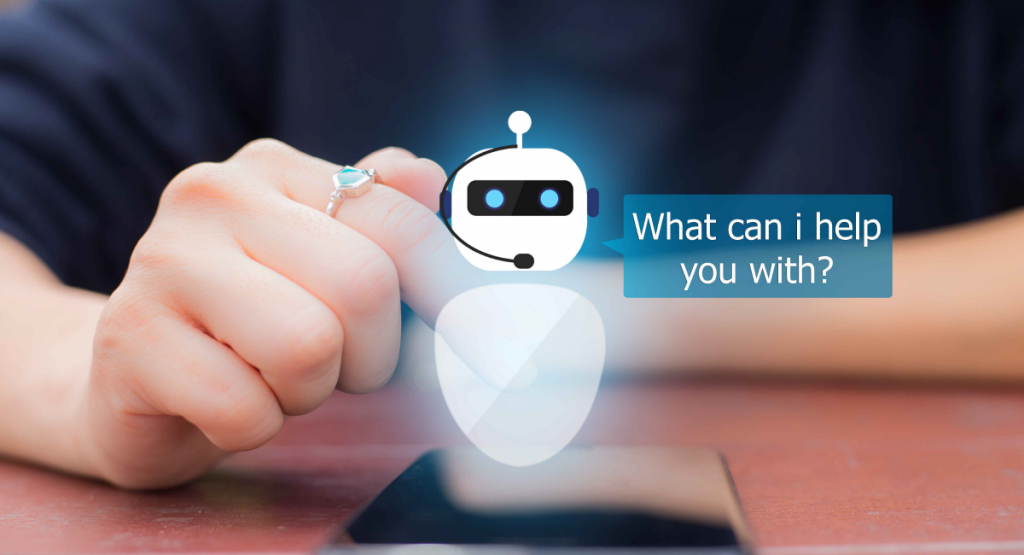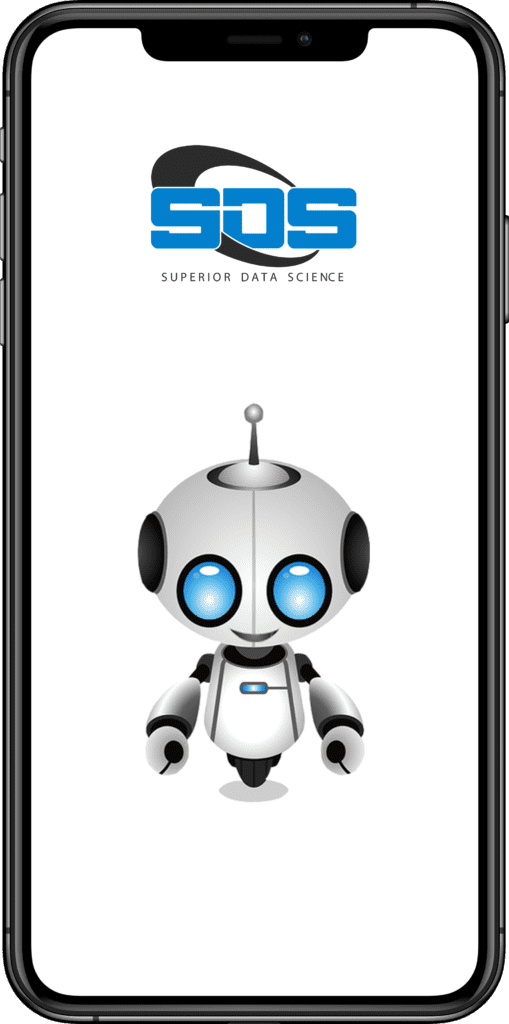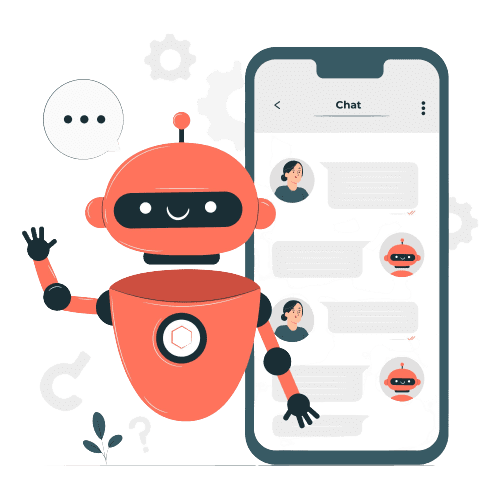In today’s fast-paced business landscape, chatbots have revolutionized customer interactions, offering instant responses and round-the-clock availability. From finance and healthcare to e-commerce and customer support, chatbots have found their place in various industries. However, to ensure their seamless functioning, it is crucial to recognize the significance of Maintenance & Support of Chatbot. In this article, we will discuss the key elements of chatbot maintenance and support. We will provide insights into post-deployment strategies for sustaining optimal performance.
Maintenance of Chatbots
Maintenance is crucial for the smooth functioning of chatbots. Here are some essential maintenance tasks:
Regular Updates and Maintenance
Chatbots need regular updates to stay current with technology and industry changes. Regular maintenance involves bug fixes, performance improvements, and updates to integrations. These updates ensure that the chatbot operates smoothly and effectively, providing a seamless user experience. By staying proactive with maintenance, businesses can keep their chatbots running at optimal performance and meet evolving user expectations.
Server Maintenance
Chatbots rely on servers, and it’s vital to maintain their optimal performance. Server maintenance involves regular updates, security patches, and efficient database management to ensure smooth operations. By prioritizing server maintenance, businesses can prevent downtime, improve response times, and enhance overall chatbot performance. Regular monitoring and proactive maintenance are essential to keep the servers running smoothly and deliver a seamless user experience.
Data Backup and Recovery
Data plays a crucial role in the functionality of chatbots, necessitating a robust backup and recovery strategy. Regular data backups safeguard against potential server crashes or unforeseen disasters, preventing data loss. By implementing reliable backup procedures, businesses can ensure the preservation of valuable user interactions and information. Regular testing and verification of the backup system are crucial to guarantee the ability to restore data accurately when needed. A comprehensive data backup and recovery plan provide peace of mind and maintain the integrity of the chatbot’s operations.
Error Monitoring and Debugging
To maintain optimal performance, it is important to implement an error monitoring system for chatbots. This system allows for the timely detection and resolution of errors, preventing potential escalations. By monitoring chatbot errors, businesses can proactively identify and address issues, ensuring smooth and uninterrupted user interactions. Regular analysis of error logs provides valuable insights for improving the chatbot’s functionality and enhancing the user experience. With an effective error monitoring system in place, businesses can minimize disruptions and deliver a seamless chatbot experience.
User Feedback Analysis
Collecting and analyzing user feedback is crucial for continuously improving chatbot performance. By regularly reviewing user feedback, businesses can gain valuable insights into areas that need improvement and make the necessary adjustments to enhance the chatbot’s user-friendliness. User feedback can shed light on common pain points, usability issues, and areas where the chatbot may fall short. This information allows businesses to refine the chatbot’s responses, improve its conversational flow, and address any user concerns. Incorporating user feedback into the iterative design process ensures that the chatbot evolves to meet user expectations and delivers a more satisfying user experience.
Security Maintenance
Securing chatbots is crucial due to their handling of sensitive information. To ensure security, measures such as secure data transmission, secure storage, and regular security audits are necessary. Implementing secure data transmission protocols protects user data during communication. Secure storage practices safeguard stored data from unauthorized access. Conducting regular security audits helps identify vulnerabilities and ensures the chatbot remains protected against potential threats. By prioritizing security maintenance, businesses can instill trust in users and protect their confidential information.
Support of Chatbots
Providing support is an integral part of chatbot deployment. Here are some of the support services that chatbots require:
User Support
Ensuring a user-friendly experience is crucial when designing chatbots. Users should be able to interact seamlessly with the chatbot without encountering difficulties. User support plays a vital role in achieving this goal by providing clear instructions on how to use the chatbot effectively and troubleshooting any issues that users may face. By prioritizing user support, businesses can enhance user satisfaction and promote smooth interactions with the chatbot.
Technical Support
Technical support is an integral part of maintaining a well-functioning chatbot. It encompasses the crucial task of troubleshooting any technical issues that may arise during the chatbot’s operation. From addressing bugs and resolving server-related problems to ensuring seamless integration with other systems, technical support plays a vital role in optimizing the chatbot’s performance. By promptly identifying and resolving these issues, technical support ensures a smooth and uninterrupted user experience.
Platform and Integration Support
Integrating chatbots into multiple platforms, including Facebook Messenger, Slack, and WhatsApp, expands their reach and user accessibility. To ensure a seamless experience, it is crucial to provide integration support, ensuring that the chatbot functions smoothly across all platforms. This support includes adapting the chatbot’s functionality to each platform’s specific requirements and addressing any compatibility issues that may arise. By offering robust integration support, businesses can maximize the chatbot’s effectiveness and reach a broader audience.
Community Support
Engaging with the chatbot user community is an essential aspect of community support. It involves actively participating in user forums, social media groups, and chatbot communities. Responding promptly to user questions and providing helpful answers fosters a positive user experience. Additionally, acknowledging and addressing user feedback helps improve the chatbot’s performance and user satisfaction. By actively engaging with the chatbot user community, businesses can establish a strong rapport with their users and build a supportive environment for chatbot usage.
Best Practices for Chatbot Maintenance and Support
Here are some best practices to follow for chatbot maintenance and support:
Regularly Monitor Chatbot Performance
Regularly monitoring the performance of your chatbot is crucial for maintaining its optimal functionality. By tracking user interactions, you can identify any patterns or bottlenecks that may impact the user experience. Monitoring server performance ensures that your chatbot runs smoothly and efficiently. Additionally, keeping an eye on error logs helps you proactively address any issues and minimize downtime. By implementing a robust monitoring system, you can quickly identify and resolve any issues that arise, ensuring a seamless user experience.
Continuous Improvements and Enhancements
Continual improvement is essential for chatbots to stay relevant and effective in meeting users’ evolving needs. Enhancements may involve introducing new features that enhance functionality and user experience. Improving response times ensures prompt and efficient interactions with users. Updating integrations with other systems or platforms ensures seamless connectivity and expanded capabilities. By embracing a mindset of ongoing improvement, chatbots can adapt and deliver optimal performance to meet user expectations.
User Feedback Integration
Integrating user feedback into chatbot maintenance and support processes is crucial for enhancing its performance. By actively collecting and analyzing user feedback, you can identify areas that require improvement and gain valuable insights into user needs and preferences. This information can guide updates and refinements to the chatbot’s design, functionality, and user experience. Incorporating user feedback fosters a user-centric approach and helps ensure that the chatbot aligns with user expectations, leading to a more satisfying and effective interaction.
Collaborative Approach
Maintaining and supporting chatbots require a collaborative effort among the development team, support team, and user community. By working together, these stakeholders can identify issues, gather feedback, and implement necessary improvements. Collaboration ensures that chatbots stay up-to-date, address user needs effectively, and provide a seamless user experience. The development team can leverage insights from the support team and user community to enhance the chatbot’s functionality and resolve any technical issues. This collaborative approach fosters continuous improvement and helps create chatbots that deliver value to users.
Challenges in Chatbot Maintenance and Support
Maintaining and supporting chatbots can be challenging. Here are some of the challenges that organizations may encounter:
Constantly Evolving Technology
Staying current with chatbot technology is crucial as it continuously evolves. Organizations need to proactively stay informed about the latest developments in the field to ensure that their chatbots remain effective and relevant. This involves keeping an eye on emerging trends, attending industry conferences, and engaging with the chatbot community. By staying up-to-date, organizations can leverage new technologies and features to enhance their chatbots and provide a superior user experience. Regular research and learning are essential to stay at the forefront of chatbot technology.
Integration Challenges
Integrating chatbots into multiple platforms presents challenges that require careful planning and execution. It is crucial to ensure seamless functionality and compatibility across different platforms. This involves assessing platform-specific requirements, adapting the chatbot’s design and features accordingly, and conducting thorough testing to verify its performance. By addressing integration challenges effectively, organizations can provide a consistent and user-friendly experience across various platforms, maximizing the reach and effectiveness of their chatbots.
Data Privacy and Security
Ensuring the security of sensitive user data handled by chatbots is paramount for organizations. They must adhere to data privacy regulations and implement robust security measures. This includes encryption of data during transmission and storage, access controls, regular security audits, and vulnerability assessments. By prioritizing data security, organizations can instill trust and confidence in their users, safeguarding their personal information from unauthorized access or breaches.
Ensuring Continuous Engagement
Organizations can ensure the success of chatbots by focusing on user engagement. This involves providing relevant and valuable interactions that capture users’ interest. Engaging chatbot experiences can be achieved through personalized recommendations, proactive assistance, and timely responses. By understanding users’ needs and preferences, organizations can tailor the chatbot’s interactions to deliver meaningful and engaging conversations. Regularly analyzing user feedback and refining the chatbot’s capabilities further enhance user engagement and satisfaction.
Resource Allocation
Organizations need to allocate resources effectively to maintain and support chatbots. This includes dedicating time, financial investments, and personnel to ensure their functionality and alignment with user needs. Regular maintenance tasks, such as bug fixes, updates, and performance optimizations, demand resource allocation to sustain chatbot operations. Adequate support, including troubleshooting and user assistance, also requires resource allocation. By prioritizing and allocating resources efficiently, organizations can ensure the long-term success and effectiveness of their chatbot initiatives.
Conclusion
Chatbots have transformed the way businesses interact with their customers. However, to ensure the success of chatbots, organizations must maintain and support them effectively. Maintenance tasks include regular updates, server maintenance, data backup and recovery, error monitoring and debugging, user feedback analysis, and security maintenance. Support services include user support, technical support, platform and integration support, and community support. Organizations must follow best practices for chatbot maintenance and support, including regularly monitoring chatbot performance, continuous improvements and enhancements, user feedback integration, and a collaborative approach. Challenges in chatbot maintenance and support include constantly evolving technology, integration challenges, data privacy and security, ensuring continuous engagement, and resource allocation.
FAQs
1. How often should chatbots be updated?
Chatbots should be updated regularly to ensure that they remain up-to-date with the latest technology and changes in the industry.
2. How can organizations ensure that chatbots are secure?
Organizations can ensure that chatbots are secure by implementing secure data transmission and storage, conducting regular security audits, and complying with data privacy regulations.
3. What is the role of user feedback in chatbot maintenance and support?
User feedback is essential for chatbot improvement. Regularly analyzing user feedback can help identify areas of improvement and help make the chatbot more user-friendly.
4. How can organizations ensure that chatbots remain engaging for users?
To ensure that chatbots remain engaging for users, organizations must provide relevant and valuable interactions. They can also continuously improve the chatbot to meet user needs.
5. What resources are required to maintain and support chatbots effectively?
Maintaining and supporting chatbots require resources, including time, money, and personnel. Organizations must allocate resources effectively to ensure that their chatbots remain functional and meet user needs.











